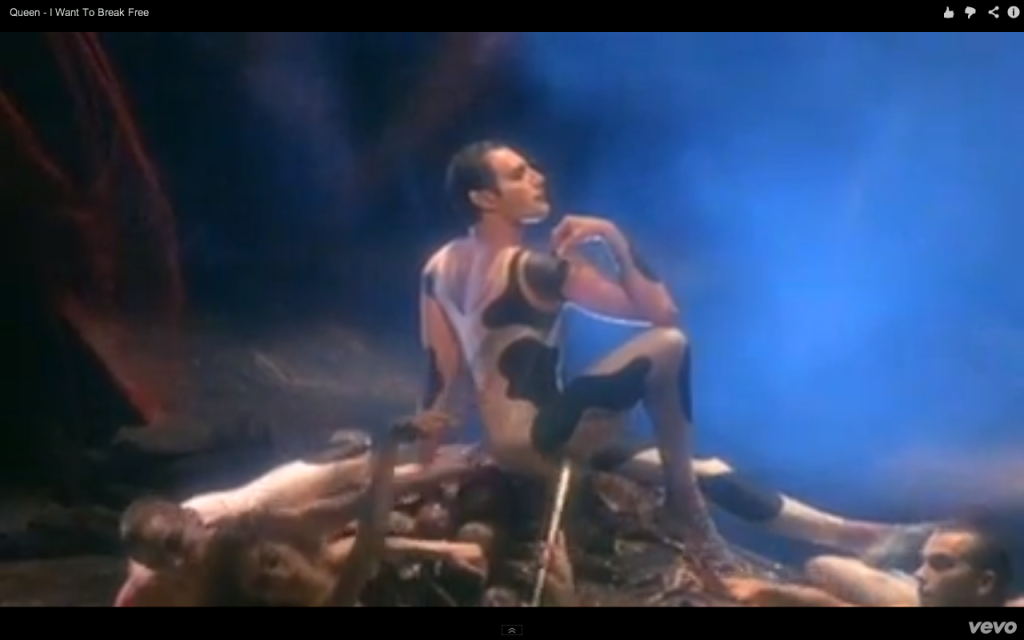
Looking at “PYNK” and “I Want To Break Free” together as a unit, both Janelle Monáe and Queen respectively represent gender homogeneously to criticize norms of heterosexuality and depict non-heterosexual power in music videos. In “PYNK,” Janelle Monae uses an all-female cast to show sexuality and tension between two women instead of a man and a woman. This can be seen through the aforementioned “butt” scene, as well as through the many innuendos included throughout the video, from the aforementioned “pussy pants” to an LED sign that says “pussy power,” to a shot of two women touching tongues. The all-female cast challenges the idea that “female artists and characters who appear in music video are…often constricted to traditionally female roles or low levels of societal consciousness” because all of the women are celebrating their own identities and expression together and there are no men in the video to confine women in music videos to these specific roles (Andsager & Roe 2003, 84). The overwhelming presence of empowered, seemingly non-heterosexual black women in the video normalizes non-heterosexual sexualities and advocates for freedom of expression.

In a similar manner, Queen’s homogenous representation of gender in “I Want To Break Free” displays non-heterosexual, masculine power that combines camp and nudity amongst individuals of the same gender. This is important because as a famous rock band in a decade that was “supposed to have been dominated by conservative national politics and the rise of the straight-laced power-lunching yuppie, the world of popular music in the 1980s looked awfully gay” (Lecklider 2004, 111). By representing gender homogeneously, “I Want To Break Free” criticizes norms of heterosexuality in the 1980s because the video helps to normalize non-heterosexual representation in music. Connected to “PYNK”, both songs use this homogeneous representation of gender in the same way, despite the songs being released nearly decades apart from one another.